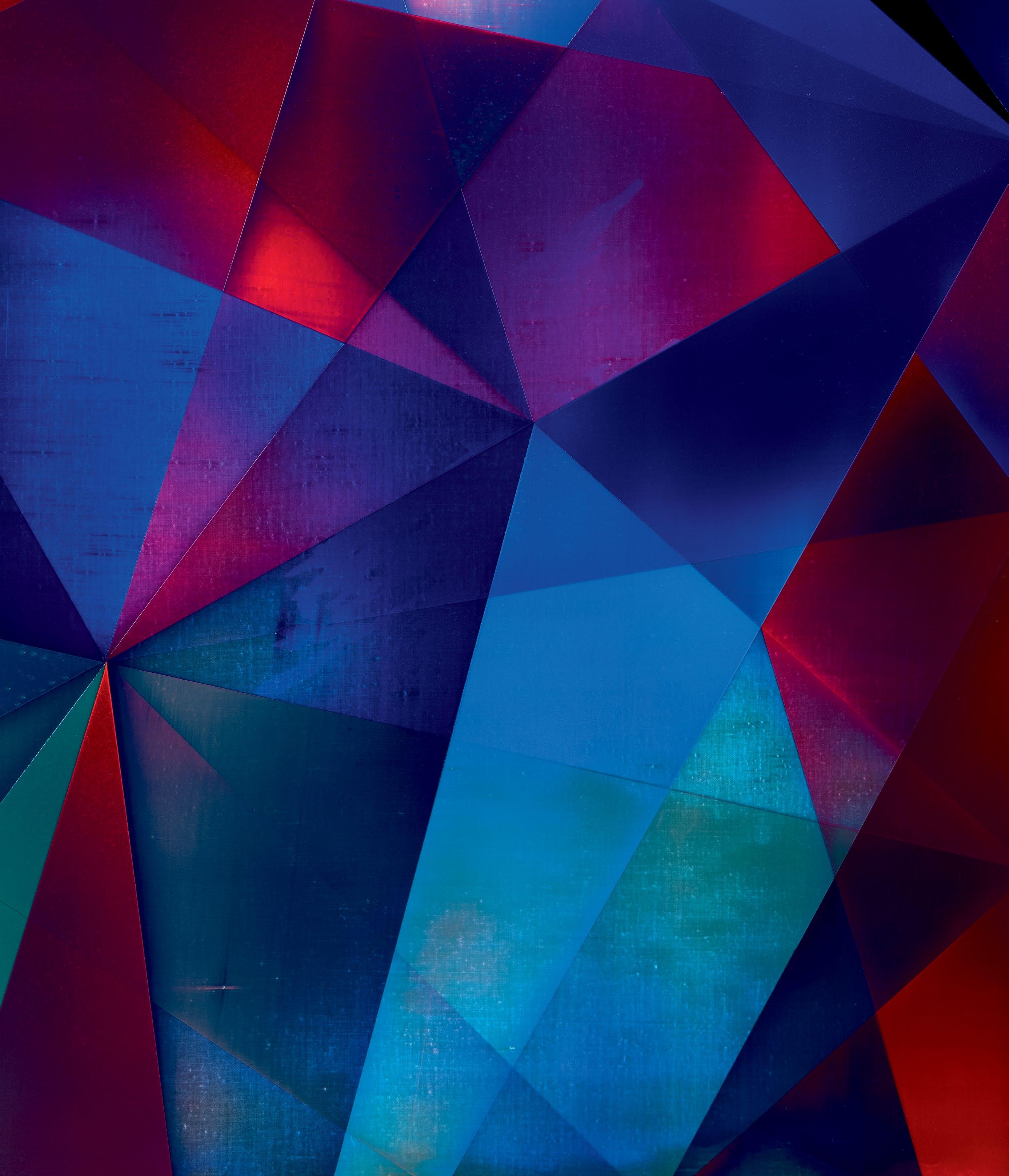SHANNON FINLEY



511 West 22nd Street New York NY 10011 515 West 22nd Street New York NY 10011
525 West 22nd Street New York NY 10011 520 West 21st Street New York NY 10011

When I visited Shannon Finley in his East Berlin studio earlier this month, he likened his work to decorating the void. While the comment seemed to be said in passing, in a kind of jest, it spoke to a deep motivation beneath Finley’s practice. In fact, the notion of a decorated void offers a compelling entry point for considering the new group of vibrantly kaleidoscopic paintings that comprise this exhibition. How might these works be seen to occupy the shifting and interrelated ground of decoration, ornament, and pattern? How could moving along a trail of associations with these aesthetic approaches—from medieval conceptions of ornament to the architectural theorizing of Robert Venturi and Denise Scott Brown—open up ways of thinking about Finley’s painting?
But first, the void. Complete emptiness, a vacuum, a hollow that it hurts to imagine. Ruminating on this state of nothingness is often associated with a nihilist negation of meaning, though the French philosopher Simone Weil positions the void instead as a revelatory space. In her 1947 Gravity and Grace she writes,
“
To accept a void in ourselves is supernatural. Where is the energy to be found for an act which has nothing to counterbalance it?...
One only escapes from the laws of this world in lightning flashes. Instants when everything stands still, instants of contemplation, of pure intuition.”1
Even though Finley’s painting is visually resonant with flashes of lightning and he has continued to hone a process over the past two decades in which moments of contemplation and intuition are key, these paintings don’t seem to speak to spiritual breakthroughs. This distinction is significant, as it sets his paintings apart from histories of abstraction that are keyed to transcendence. Indeed, these works’ bright sheens and fractured planes may have less to bear on supernatural reckoning, than on the everyday navigating—the continuous decorating, if you will—that is daily
life. Time spent doing one thing or another, as meaningful or meaningless as it may be, is rife with both delight and despair. These works have a capaciousness, as if Finley were attempting to fit as much information as possible on the canvas. As hard-edged shapes intersect and overlap in a contest of color, each fragment in each composition appears essential to its cacophonous whole.
Ornament—as a concept or as an aesthetic proposition—was also originally constituted as something integral to a whole, rather than as an added flourish. The late historian of Indian art Ananda K. Coomaraswamy traces the medieval origins of the term, which stand counter to the term’s vaguely denigrative connotation in contemporary parlance, emphasizing that
“our use of the word ‘decorative’ would have been abusive, as if we spoke of a mere millinery or upholstery: for all the words purporting decoration in many languages, Medieval Latin included, referred originally not to anything that could be added to an already finished and effective product merely to please the eye or ear, but to the completion of anything with whatever might be necessary to its functioning.”2
By way of example, he suggests that “a sword, for example, would ‘ornament’ a knight, as virtue ‘ornaments’ the soul or knowledge the mind.”
With this in mind, one might consider the ornamental quality of the various shapes that comprise Finley compositions. Each component—a triangle, a rhomboid— comes to function as a kind of key that cinches the integrity of the whole. Take the large-scale landscape format, Known Unknowns, for instance, in which Finley melds rounded and angular forms, and mixes deep blues and purples with tinges of neon pink, green, and yellow. As this wide variation coalesces into an image, each subtle flourish of color or bisection of line appears inextricable from the cohesive whole. Working sequentially in a series of layers, Finley tapes off parts of the canvas to segment his shapes in an array of colors. In a process he has honed over the past two decades, he moves from a digital mock-up of the composition, to the canvas,
then back to the digital again, with a photograph of the painting that he manipulates to test out next steps in altering the shapes and colors. Until the painting is finished, every aspect of its constellation could change, and this sense of shifting motion remains palpable in the work. His process also drives a relationship between form and color that oscillates between confrontation and symbiosis. A circle is bisected by the side of a triangle in the top left of the composition; its top half is almost magenta, and its bottom is a rusty blue. Another circle hovering at the top of the picture plane toward the center of the composition is split into hemispheres: a bright, gradated green atop an orangey yellow. The painting invites you to focus in on details like these then step back again to take in the whole. It’s like a puzzle, in that each shape seems to have secured its spot within the whole, in a piecing together that has an almost tactical quality. More game metaphors: think of it like dominos (slide one shape out and the whole thing tumbles).
Shannon Finley has taken on the obligation toward the difficult whole. Consider the particularly complex composition of pointed shapes in Aftermathematics, for instance, where seemingly countless layers of triangular forms concatenate in an intricate picture plane. It’s as if a regulating repetition of pattern attempted to harness this dance of triangles but couldn’t constrain their continuous variance in how they’re spliced and shaded. This whole is hard to parse. It presents a visual challenge; this is what makes it intriguing.
The weighty and poignant phrase—“the obligation toward the difficult whole”— is lifted from the title of a chapter in Robert Venturi’s 1966 book Complexity and Contradiction in Architecture, a hallmark of postmodernism that he wrote in close collaboration with his wife, the architect Denise Scott Brown. The book was central to their effort to restore the place of ornament and the decorative treatment of surfaces in architecture. They assert that
“the difficult whole in an architecture of complexity and contradiction includes multiplicity and diversity of elements in relationships that are inconsistent.”
While Venturi is writing about architecture, the ideas he raises can be evocatively transposed to Finley’s painting. Venturi advocates for an architecture that “involves the art of the fragment” and employs the idea of inflection to get at the relationship of component parts to the whole:
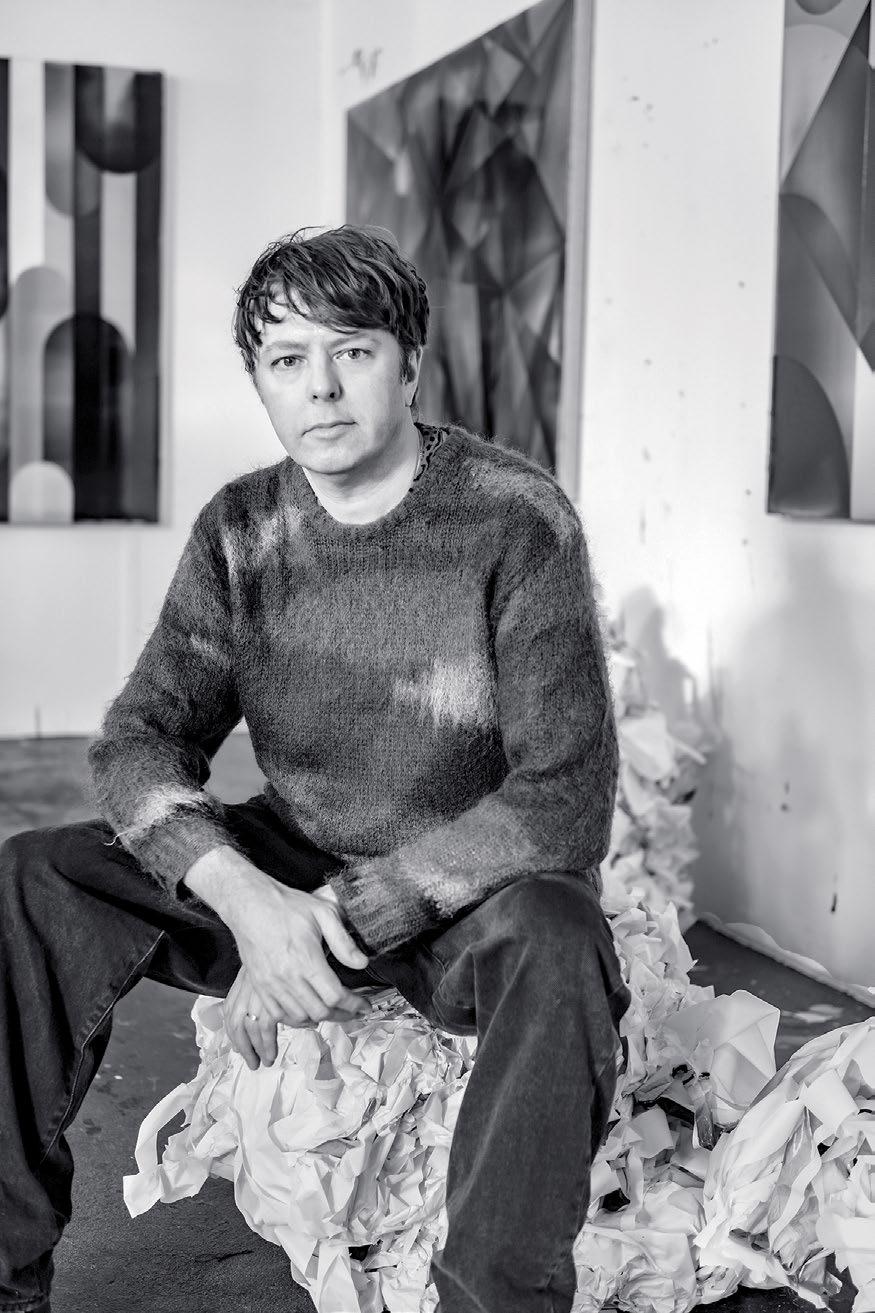
“By inflecting toward something outside themselves, the parts contain their own linkage.… Inflection is a means of distinguishing diverse parts while implying continuity.”3
Such language can also be lifted to address Finley’s oeuvre. In the fractured picture plane of Aftermathematics, as well as the darker-toned Dragonaut and the vibrantly hued Mind Expander, angular shapes encounter each other, and shapes often transgress other shapes, occasionally meeting at pinpoint edges to fan out into kaleidoscopes. Each shape appears at once distinct and inextricable from
the greater whole. In a play with perspective, the composition in Dragonaut shifts between an impression of perspectival depth and flatness, like a three-dimensional origami shape that is flattened again along its folds.
Beneath this physical understanding of inflection lurks the way in which meaning inflects material. Shannon Finley’s paintings offer themselves up as sounding boards, ready to bounce off the inflection of connotation, association, and projection inherent in putting abstract painting into language. They can stand on their own. They have processed the artist’s experience of life into an abstract form and can become a site of processing for their viewers, too. Bring to me what you will, they seem to say, whether you see fertile ground for musings on ornament, the neons of acrylic nails, the glint of car paint, Bauhaus forms, transcendental triangles, or any other reshuffling of histories of abstraction. Crucially, you will also see yourself as the sheen of the paintings are almost reflective, occasionally catching the viewer in their surface. While their compositions are tight—verging on resolution—they maintain an openness. Take it as an invitation to enter.
1. Simone Weil. Gravity and Grace. Routledge Classics, 2008.
2. Ananda K. Coomaraswamy. “The Nature of Medieval Art,” Studies in Comparative Religion 15, no. 1-2 (Winter-Spring, 1983).
3. Robert Venturi. Complexity and Contradiction in Architecture. New York: The Museum of Modern Art, 2019.
Aftermathematics, 2022 Acrylic on linen
47 1/4 x 70 7/8 inches 120 x 180 cm


Dragonaut, 2022
Acrylic on linen
47 1/4 x 70 7/8 inches 120 x 180 cm
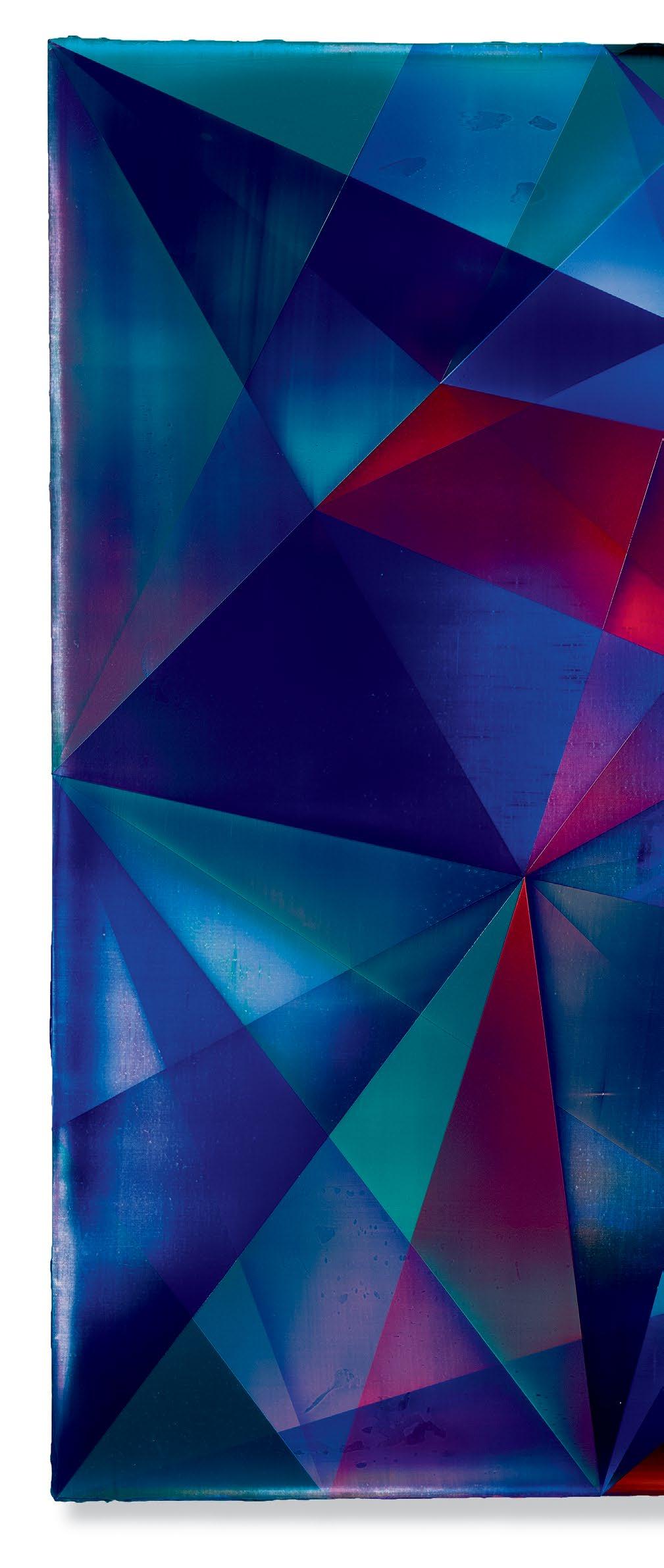

Encrypted and Lost, 2022
Acrylic on linen 39 3/8 x 39 3/8 inches 100 x 100 cm

Kepler’s Dream II, 2022
Acrylic on linen
59 x 47 1/4 inches
150 x 120 cm
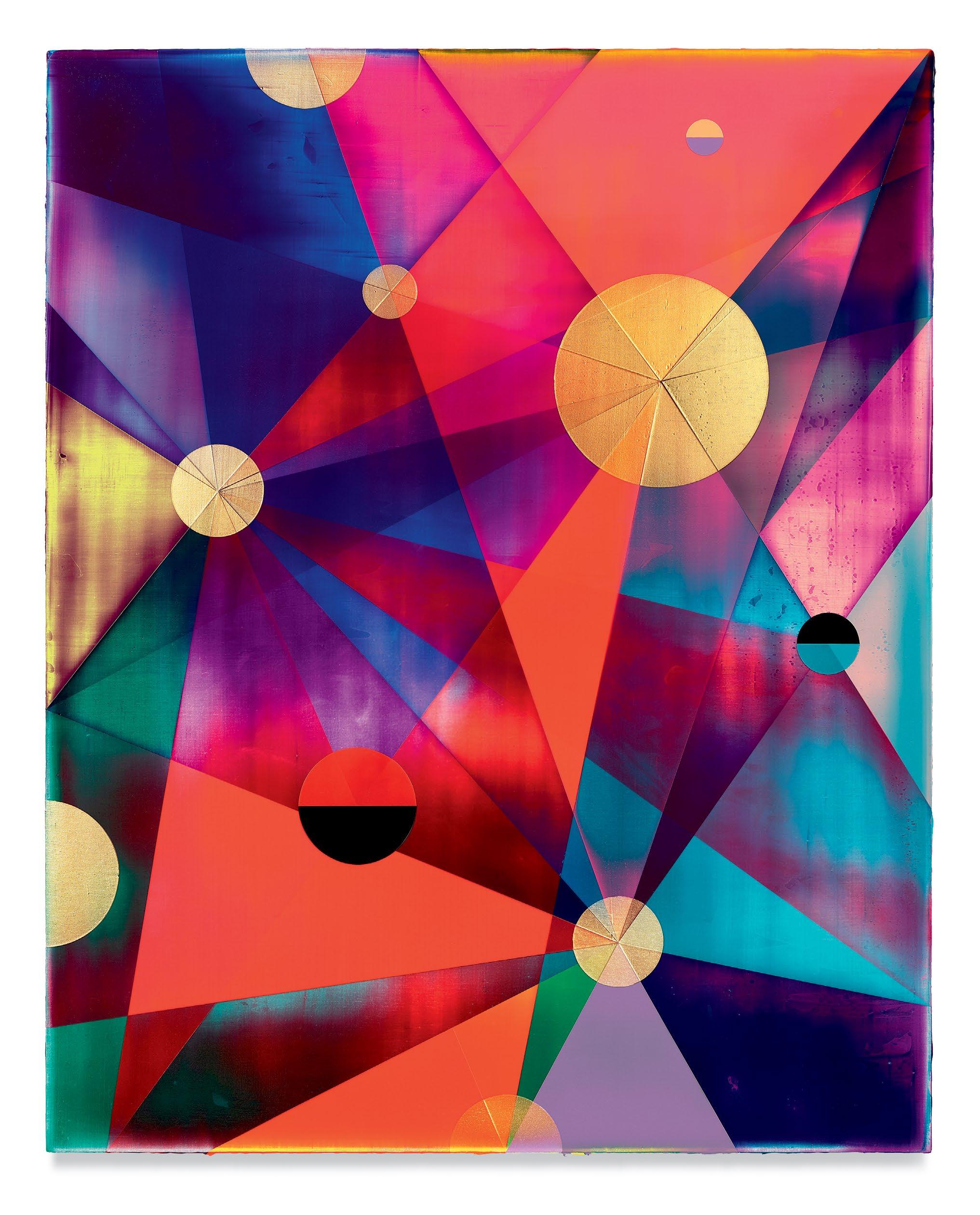
Known Unknowns, 2022
Acrylic on linen
47 1/4 x 70 7/8 inches 120 x 180 cm
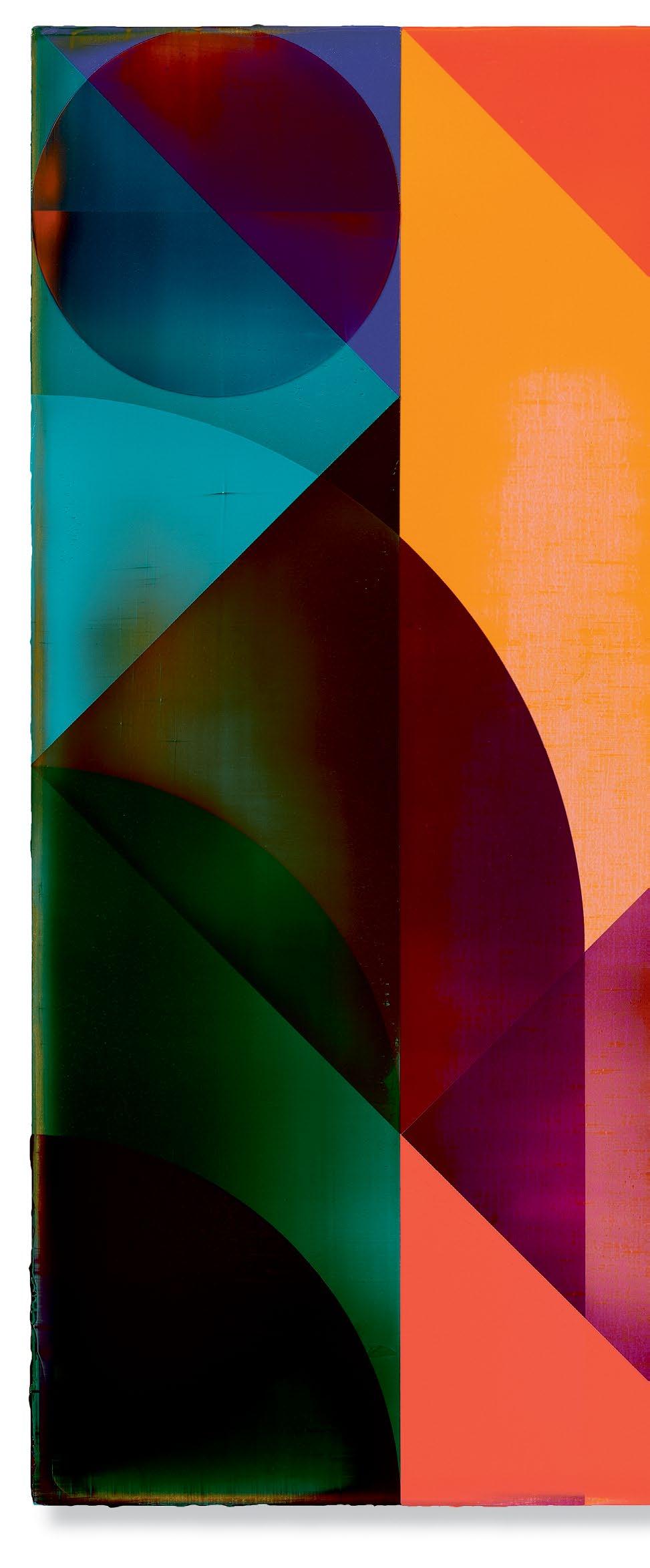
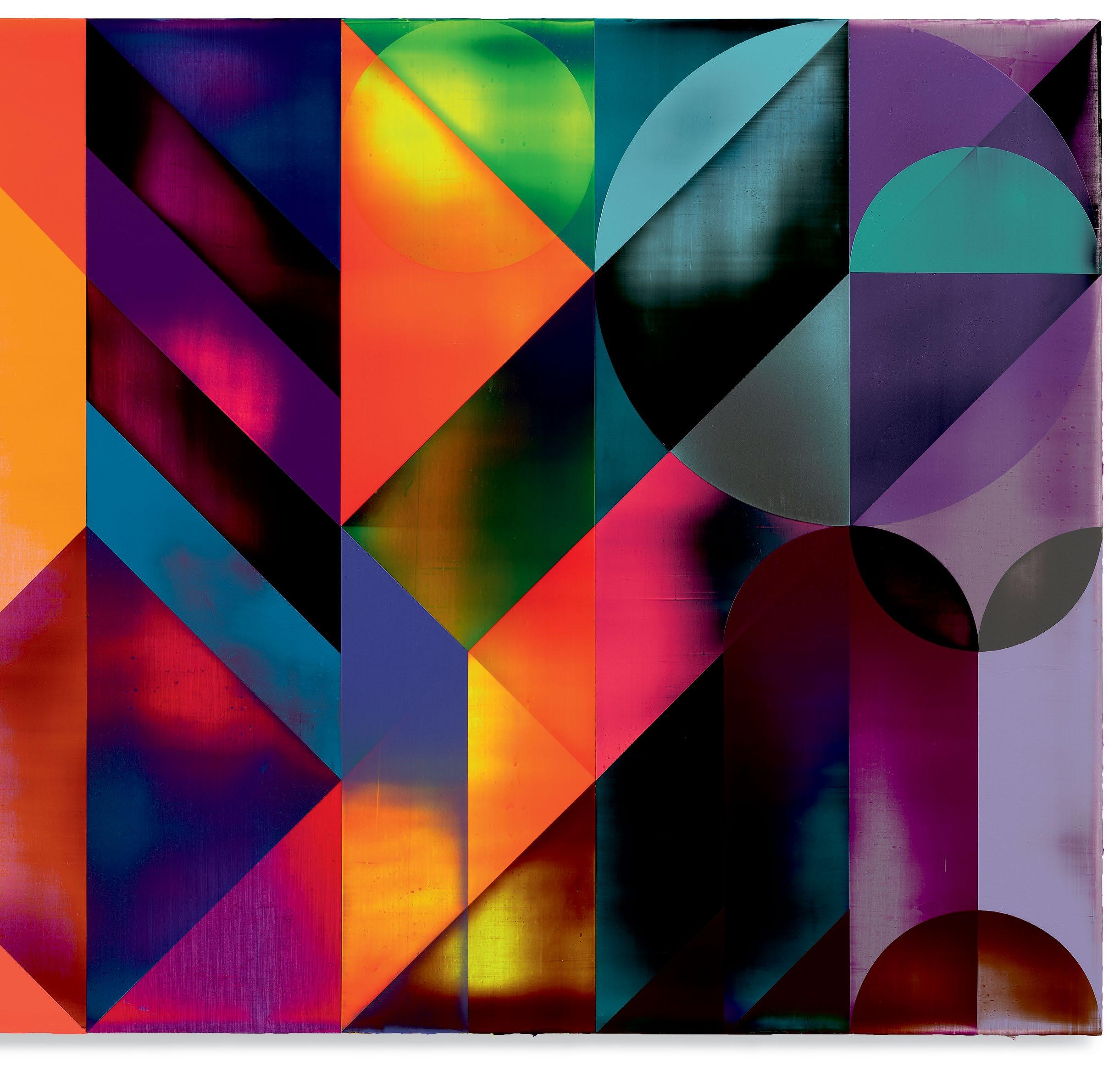
18
Levitation Session, 2022 Acrylic on linen 59 x 47 1/4 inches 150 x 120 cm
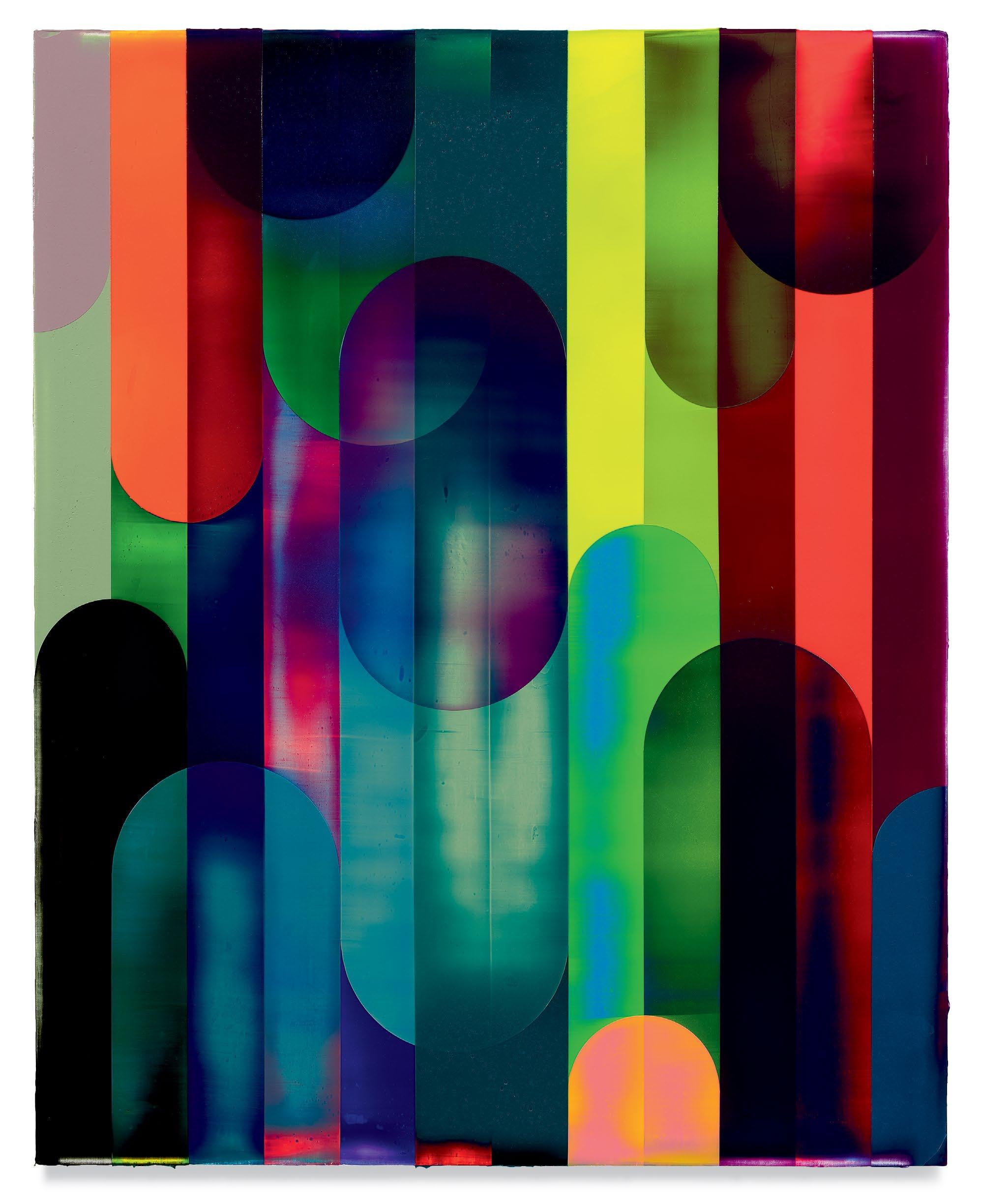
Mind Expander, 2022
Acrylic on linen
78 3/4 x 63 inches
200 x 160 cm

Spacehopper, 2022 Acrylic on linen 59 x 47 1/4 inches 150 x 120 cm

The Pyrocene, 2022 Acrylic on linen
59 x 47 1/4 inches 150 x 120 cm

26
Vector Quest, 2022 Acrylic on linen
27 1/2 x 39 3/8 inches
70 x 100 cm
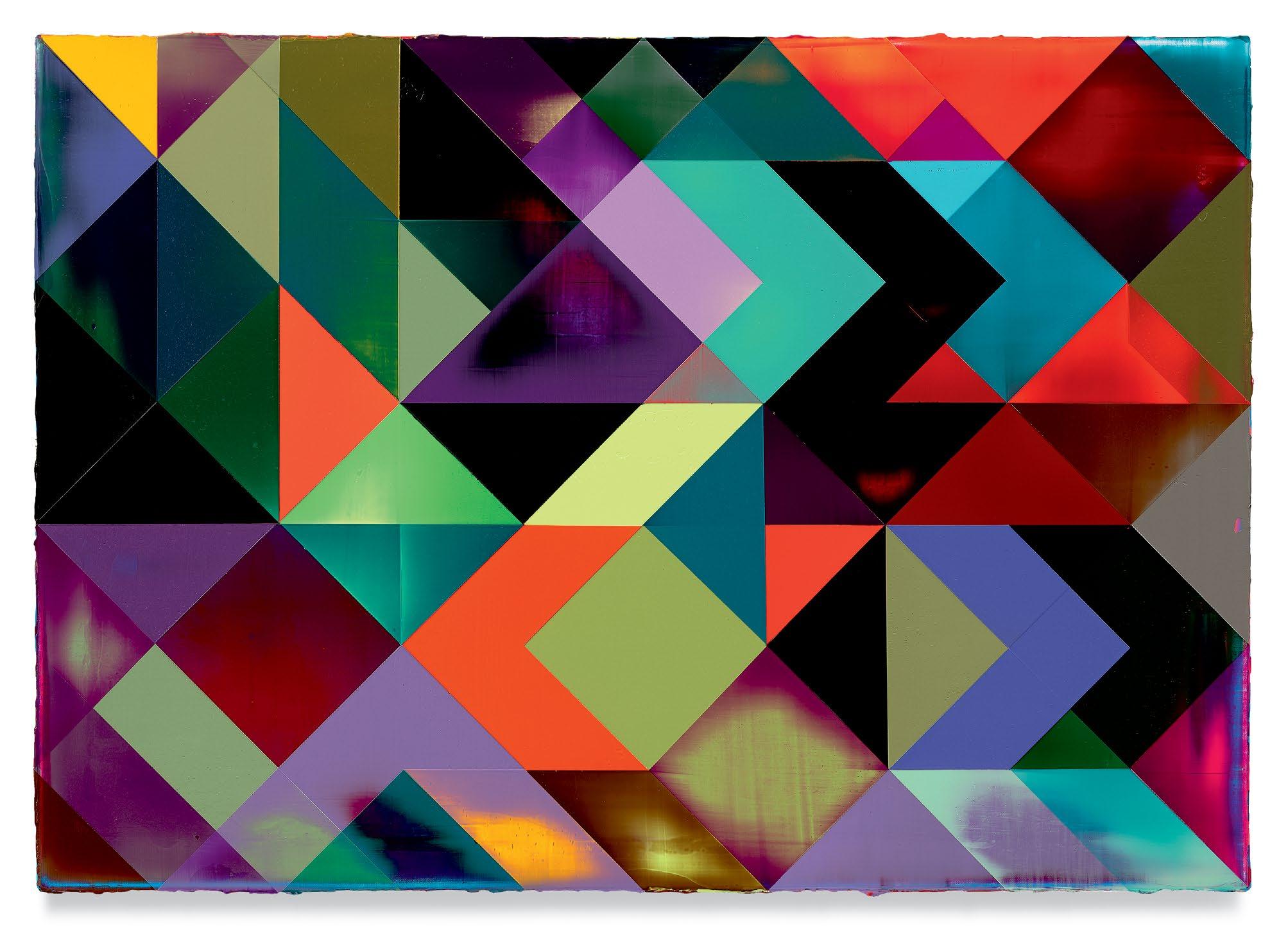
Flicker, 2022 Acrylic on linen 15 3/4 x 12 1/2 inches 40 x 32 cm
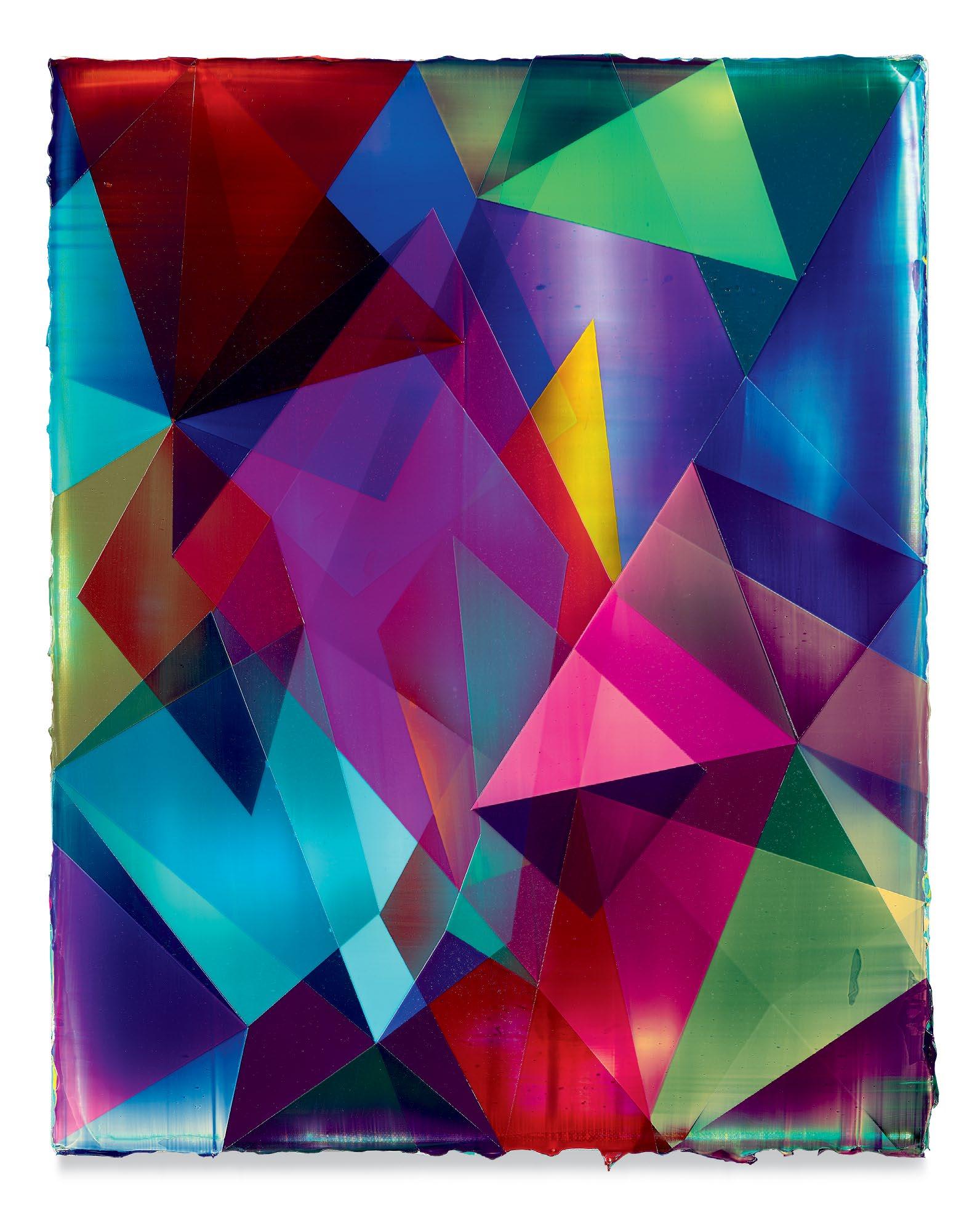
Inner Space, 2022
Acrylic on linen
15 3/4 x 12 1/2 inches 40 x 32 cm

Tuned Realities, 2022 Acrylic on linen 15 3/4 x 12 1/2 inches 40 x 32 cm
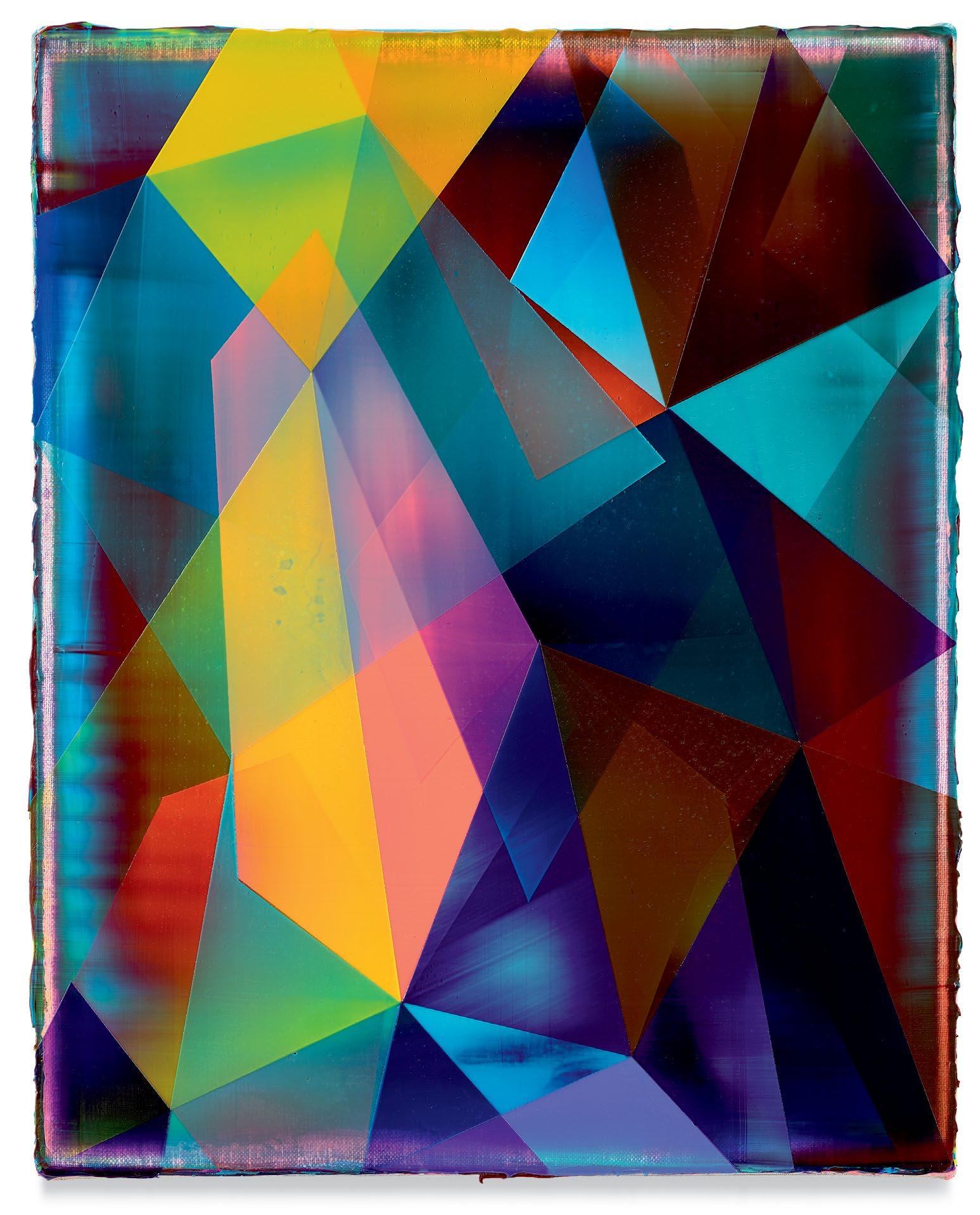
Witcher, 2022
Acrylic on linen
15 3/4 x 12 1/2 inches 40 x 32 cm
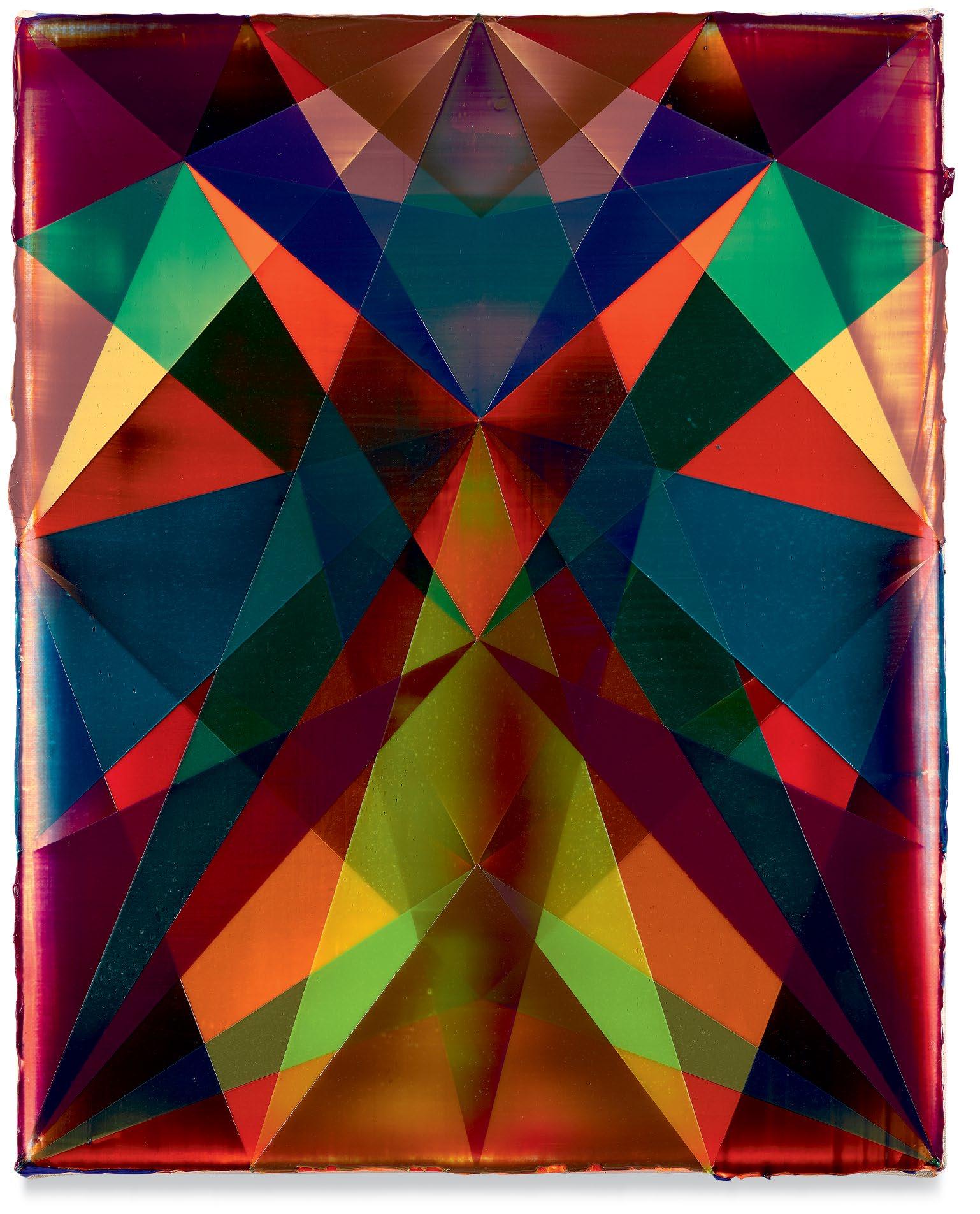
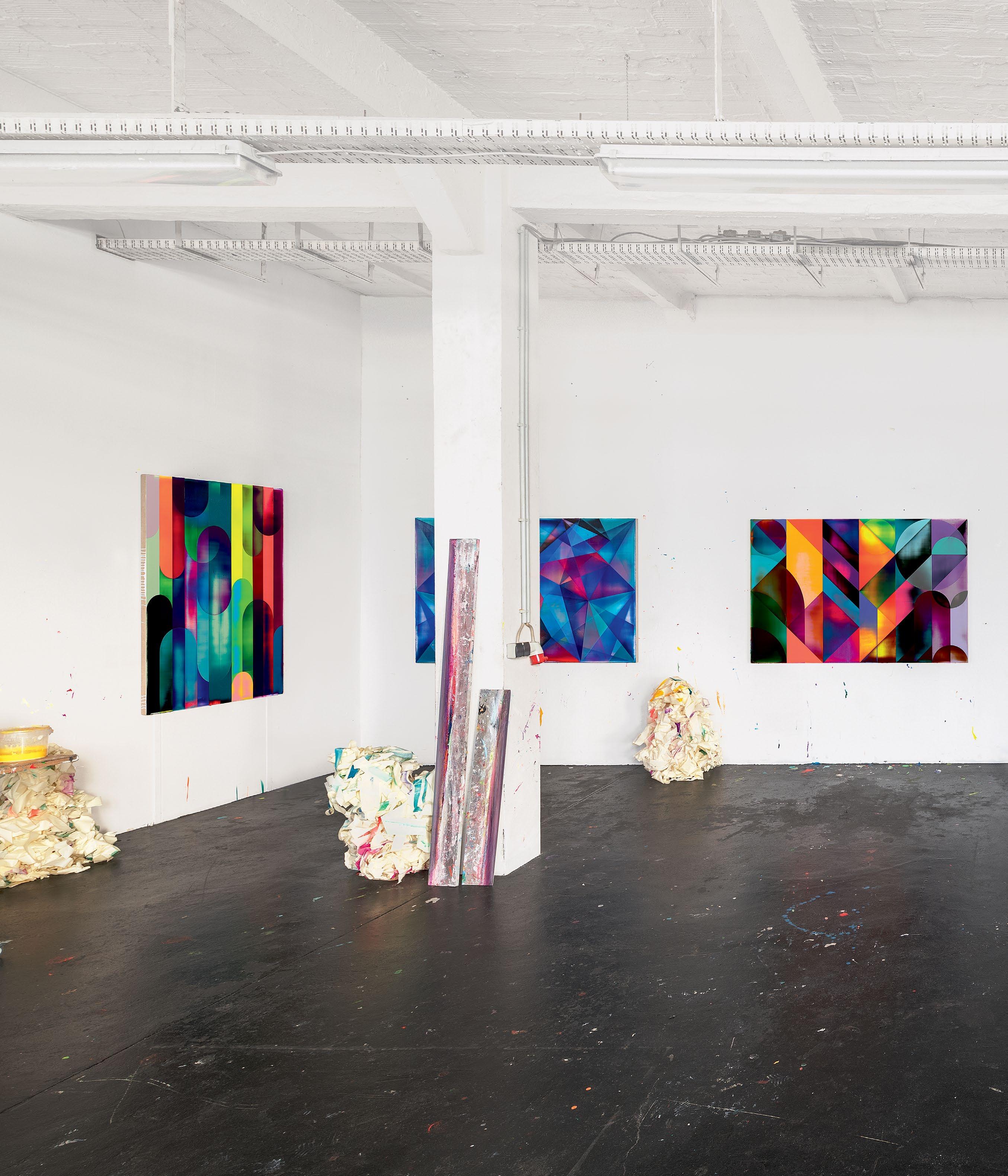

Born in Ontario, Canada in 1974 Lives and works in Berlin, Germany
1999
Nova Scotia College of Art and Design, Halifax, Canada 1998
The Cooper Union for the Advancement of Arts and Science, New York, NY
2023
Miles McEnery Gallery, New York, NY Mies van der Rohe Haus, Berlin, Germany
2021
Walter Storms Galerie, Munich, Germany
“Cascade,” Miles McEnery Gallery, New York, NY “Rupprecht Geiger | Shannon Finley: Licht, Farbe, Raum,” Kunsthaus Kaufbeuren, Kaufbeuren, Germany 2020
“End of Line,” Carrie Secrist Gallery, Chicago, IL 2019
“Convergence,” Walter Storms Galerie, Munich, Germany 2016
“INTERFERENCE,” Carrie Secrist Gallery, Chicago, IL Lora Reynolds Gallery, Austin, TX “Future Shock,” Culture Circle Gallery, Hamburg, Germany
2015
Walter Storms Galerie, Munich, Germany
“Paintings for the Future,” Jessica Silverman, San Francisco, CA
2014
Susanne Vielmetter, Los Angeles Projects, Los Angeles, CA Vladimir Restoin Roitfield, New York, NY
2013
Maruani and Noirhomme Gallery, Brussels, Belgium
2012
“Shannon Finley and Rupprecht Geiger,” Walter Storms Galerie, Munich, Germany “Century Entropy,” Bischoff Weiss Gallery, London, United Kingdom
2011
“Encrypted and Lost,” Galerie Christian Ehrentraut, Berlin, Germany
2010
Silverman Gallery, San Francisco, CA “Specters into Signals,” Galerie Christian Ehrentraut, Berlin, Germany
2007
“Vector Love,” Kunst Klub, Berlin, Germany
1999
“ex post facto,” Anna Leonowens Gallery, Halifax, Canada 1997
“New Paintings,” Eye Level Gallery, Halifax, Canada “Walk the Line,” Khyber Center for the Arts, Halifax, Canada
2022
“Three Colors: Blue, White, Red,” Walter Storms Galerie, Munich, Germany
2021
“Think Big: It’s All About Spaces,” Walter Storms Galerie, Munich, Germany
2019
“Shall we go, you and I while we can,” Carrie Secrist Gallery, Chicago, IL
2018
“Tomorrow’s Dream,” Neuer Essener, Kunstverein, Essen, Germany
2017
“40 Years Walter Storms Galerie 1977 – 2017,” Walter Storms Galerie, Munich, Germany
2016
“Pioneer Lust,” Lora Reynolds Gallery, Austin, TX
“Colouring the Edge,” 3812 Gallery, Hong Kong “Takashi Murakami’s Superflat Collection,” Yokohama Museum of Art, Yokohama, Japan
2015
“Appropinquation,” Carrie Secrist Gallery, Chicago, IL
2014
“5 years schellingstr. 48,” Walter Storms Galerie, Munich, Germany
“Shifting Optics,” Upstream Gallery, Amsterdam, Netherlands
“White is the Warmest Color,” Hedge Gallery, San Francisco, CA “Neon-From glowing of art,” Stadtgalerie, Saarbrücken, Germany
2013
“Neon,” Museum für Konkrete Kunst, Ingolstadt, Germany
“Painting Forever!,” KW Institute, Berlin, Germany
“In the Studio,” Kunsthalle Athena, Athens, Greece “Photography, Reconstructed” (curated by Pavel Vancát), Prague Biennale, Prague, Czech Republic
2012
“Linie, Flache, Zeit, Ratskeller,” Galerie für Zeitgenössische Kunst, Berlin, Germany
“Abstract Confusion,” Städtische Galerie Gladbeck, Gladbeck, Germany and Kunsthalle Erfurt, Erfurt, Germany
“Kaleidoscope,” C24 Gallery, New York, NY
2011
“Group Show,” Salon der Gegenwart, Hamburg, Germany
“Abstract Confusion,” b05 – Kunst- und Kulturzentrum, Montabaur, Germany and Kunstverein Ulm, Ulm, Germany
“Liquid Space,” Nettie Horn Gallery, London, United Kingdom
“You Are Here: Berlin – Tokyo,” Berlin, Germany and Tokyo, Japan
2010
“Konstruktiv!,” Beck & Eggeling, Düsseldorf, Germany
“Hostile Aestetik Takeover,” Appartement, Berlin, Germany
“Alien Tourists Part 1, 2, 3,” The Forgotten Bar/Galerie im Regierungsviertel, Berlin, Germany
“37 x Now,” The Forgotten Bar/Galerie im Regierungsviertel, Berlin, Germany
2009
“wasistdas ‘09,” Paris, France “Spirits,” Stadtbad Wedding, Berlin, Germany
2008
“Forrest Gods,” Secret Garden, Berlin, Germany Neuer Aachener Kunstverein, Aachen, Germany
2007
“400 Blows,” After the Butcher/Galerie Thomas Kilper, Berlin, Germany
“New Revolutionary Ghosts (Sandy Video),” Broadway 1602, New York, NY and Los Angeles, CA “Curse the Tainted Pharoa’s (Sandy Performance),” Galerie Meerrettich, Berlin, Germany
“You are Here,” Eel Pie, Berlin, Germany Neuer Aachener Kunstverein, Aachen, Germany
2006
“Starting at the Edge,” Mushroom Arts, New York, NY 2005
“Three Black Minutes,” Autocenter, Berlin, Germany “NY Metro,” University of Pennsylvania, Clarion, PA
2004
“Super Salon,” Samson Projects, Boston, MA 2003
“Scope,” Dylan Hotel, New York, NY “Groundswell,” White Columns, New York, NY
2002
“Underground,” Pat Hearn Art Gallery, New York, NY
Georgia Museum of Art, Athens, GA
Museum für Konkrete Kunst, Ingolstadt, Germany
Published on the occasion of the exhibition
2 February – 11 March 2023
Miles McEnery Gallery
511 West 22nd Street New York NY 10011
tel +1 212 445 0051 www.milesmcenery.com
Publication © 2022 Miles McEnery Gallery All rights reserved Essay © 2022 Camila McHugh
Director of Exhibitions Anastasija Jevtovic, New York, NY
Publications and Archival Assistant Julia Schlank, New York, NY
Photography by anna.k.o., Berlin, Germany
Color separations by Echelon, Los Angeles, CA
Catalogue designed by McCall Associates, New York, NY
ISBN: 978-1-949327-98-4
Cover: Dragonaut, (detail), 2022
